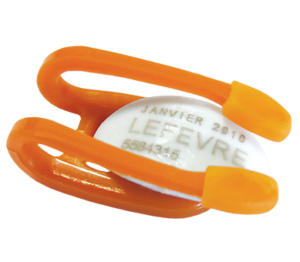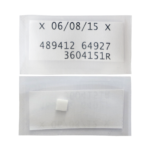
In the two last decades, the frequency, the number and the duration of interventional radiology procedures have rised (UNSCEAR Report) increasing the occupational dose to the medical staff involved specially the extremity & lens of eye doses.
LANDAUER provides you with VISION® OSL dosimeter allowing you to set up a lens of eye dosimetry service. Take advantage of complete monitoring with IPLUS® whole body dosimeters and MONORING® finger dosimeter.
The occurrence of lens opacities (cataracts) following exposure to ionising radiation has become a real concern. That leads ICRP to recommend to decrease the exposure limit for eye lenses from 150 mSv to 20 mSv averaged per year over 5 years with no annual dose in a single year exceeding 50 mSv. This limit on the equivalent dose to the lens of the eye was approved by IAEA Board of Governors and revised in 2014 edition of the International Basic Safety Standards (BSS).
About lens of eye dose measurement around the worldIn the European Union, directive 2013/59 imposed implementation of such limits in the country members in their national regulatory texts. The eye lens dosimetry has thus become an important focus . Other countries followed more recently (like Japan in April 2021). Discover VISION, OSL lens of eye dosimeterVISION is a passive lens of eye dosimeter compatible with TLD technology. It measures X-rays, gamma rays and beta radiation. LANDAUER® has developed a new lens dosimeter to assist you:
|
TLD technology Wear period identification |
The use of a lens dosimeter is specially recommended for potential highly exposed activities where radiation fields are heterogeneous as dose received by the lens cannot be deducted from the wholebody dose such as:
It is also important to monitor the dose as close as possible to the eye. Studies such as Geber et al (2011), shows for example that positioning the dose to the eyebrow could underestimate the dose by 45% in interventional procedure.
Beside, eye dose should be estimated using Hp(3) type tested dosimeters.
VISION dosimeter allows lens of eye dose monitoring closer to the eye. It can fit any kind of lead glass. Dose can be monitored more precisely as the detector is positioned “behind” the lead shield of the glass and very close to the eye.

VISION – Lens of eye dosimeter

The LiF detectors are small and relatively tissue equivalent. LANDAUER uses them for measurements of extremity doses (eg MONORING®) and lens of eye dose (eg VISION®).